
- D-Day & A La Carte Normandy tours (1 to 8 Days)
- European Tours (8 to 14 Days)
- European Ancestry Tours (8 days minimum)
- Golf and History Tours
- Anniversaries & Special Events tours (9 to 25 days)


Watch to Learn More About Normandy American Heroes

THE NORMANDY AMERICAN HEROES BLOG
World war two, normandy and more, golf during world war ii.
Posted by Lisa Marie on Mar 12, 2024 4:15:00 PM
"Yesterday, December 7th, 1941, a date which will leave in infamy the United States of America was suddenly and deliberately attacked by naval and air forces of the Empire Japan."
President Franklin D. Roosevelt
A few hours before the Pearl Harbor attack, the Commander in chief of the United States Navy’s Pacific Fleet, Admiral Husband E. Kimmel, was on his way to the Fort Shafter Golf Course, located in Honolulu, Oahu, Hawaii, built in 1921 by the famous architect Albert Warren Tillinghast .
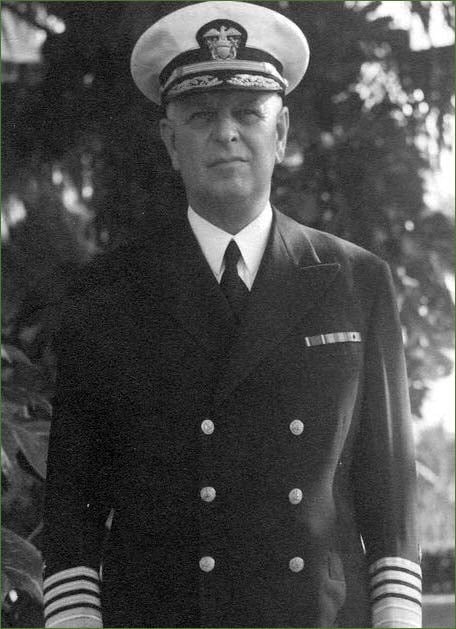
Admiral Husband E. Kimmel
Admiral Kimmel was supposed to play golf with Lieutenant General Walter C. Short, his army counterpart on the island, and Captain Louis Truman , Short’s aide-de-camp on that day. Among the three, Captain Truman was the greatest golf player. He even won the Navy Cup at Fort Shafter Golf Course two weeks earlier. Unfortunately, this game will never be played, since the Japanese attacked Pearl Harbor, marking the entry of the United States into the Second World War.
But golf had its part to play! Indeed, the German threat led the American population to support its nation, so as golf! The most significant help the golf community could bring, was the financial one.
Here is the content of a letter from the Professional Golfers’ Association of America (PGA), sent to President Roosevelt. My dear Mr. President: The Professional Golfers’ Association of America is solidly behind you in the present crisis, and we stand ready to provide any service you may ask of us. Already, we are planning a nationwide Golf War Relief Day, the entire proceeds to be used for war relief agencies or in any other way in which you may direct. This program will be participated in by sections of the P.G.A. throughout the United States. You may be sure that we will continue our policy of aiding and assisting in the present war program wherever and whenever we are called upon. Very sincerely yours, Ed Dudley , President Professional Golfers’ Association of America As a consequence, many golf clubs decided to financially contribute to the war, especially by organizing tournaments to raise funds to the American Red Cross, the Navy Relief, or other military organizations. Golf, a physical and moral booster! If eight millions of American citizens joined the armed forces, it was important for the government to have the support of the one hundred twenty-four civilians.
There were many ways to participate to the war effort, especially in the factories. To be effective, it was necessary to keep practice a physical activity. The mission of boosting the people was assigned to John Brenden Kelly , U.S. director of civilian defense in charge of physical fitness. Sportsman himself and former Olympic rower, who won two gold medals, but also father of the famous Grace Kelly , he promoted physical fitness as being necessary to the war effort, even for non-soldiers. John Kelly used to play golf and soon realized it could be useful tool to improve men’s condition, since it helped to muscle legs and for cardio. Therefore, he lectured the United States Golf Association (USGA) on the importance of continuing practicing golf, using France as an example. Indeed, he qualified the Hexagon as “the most physically inactive country in the world” and which had stopped playing golf, in some ways leading to the German invasion. He even created the position of golf deputy, and named Fred Corcoran , manager of the Professional Golfers’ Association of America (PGA) Tournament Bureau.
He then offered the USGA to encourage its member clubs to conduct the Hale America tournaments, a patriotic series of tournaments which would take place during national days, and supervised by Robert (Bobby) Tyre Jones Jr. , a four-time U.S. Open and five-time U.S. Amateur winner, retired from competitive golf after winning the Grand Slam in 1930, Craig Wood , the U.S. Open Champion, and PGA president Edward Bishop Dudley .
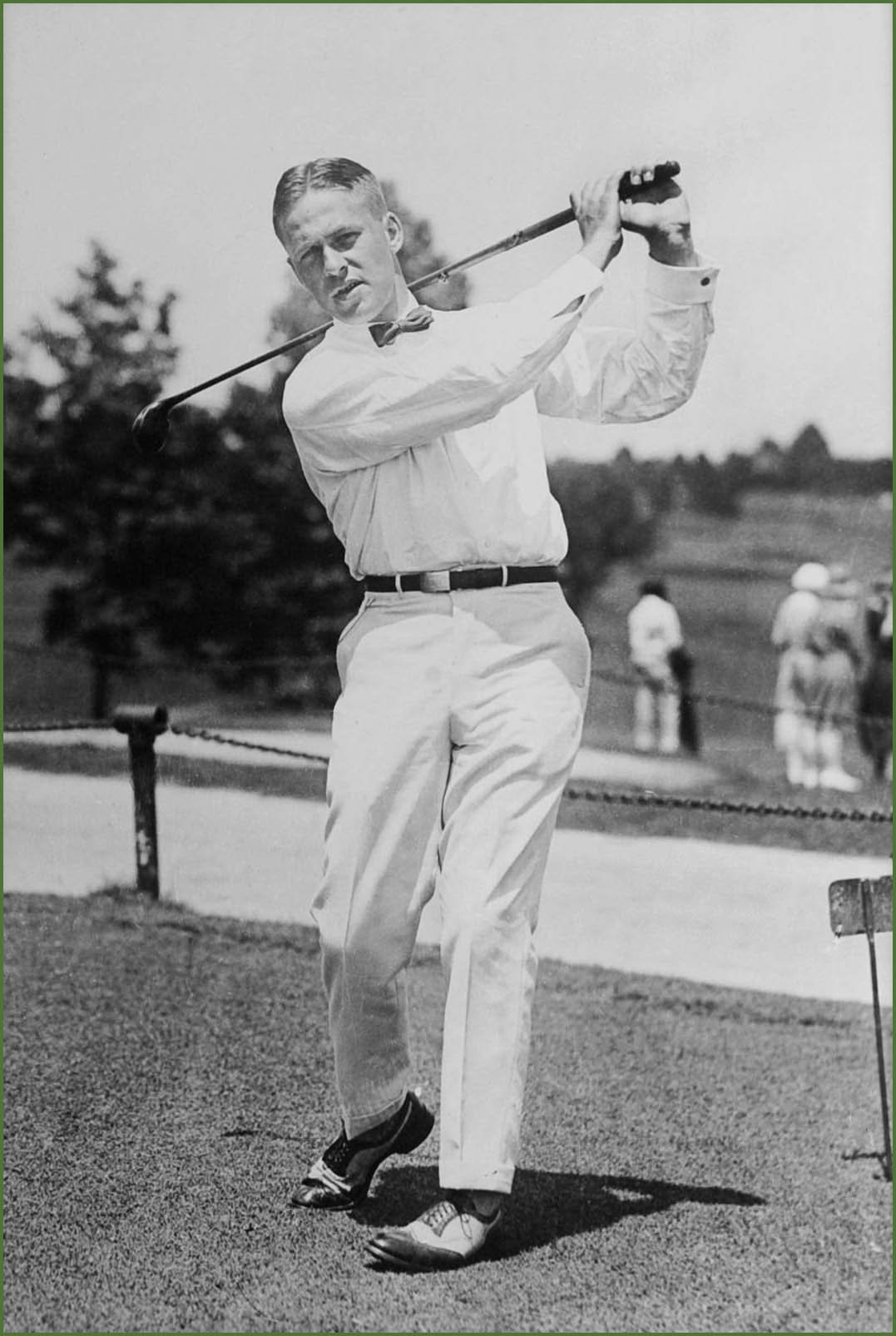
If golf was considered to be physically beneficial, Robert Jones and John B. Kelly were convinced it would also have a positive impact on civilians moral.
The sport was very useful for civilians' well-being, but also for soldiers'! The United States Army Camp Gordon was established in October 1941, welcoming the 82 nd Airborne and 4 th Infantry Divisions.
Located in Augusta, Georgia, it was near the Augusta National Golf Club, co-created in 1934 by Robert Jones and Clifford Roberts , an American investment dealer and golf administrator. They both decided the club would financially support the Camp Gordon.
However, Bobby Jones thought it would be very beneficial for soldiers if they could play. As it was complicated for them to come to the Augusta golf course, he had the idea to build one directly inside the camp.
A few months later, a course was built, and Bill Lynch (When War Played Through Spelling), an army private class, was its professional at the course. Among all the golf clubs involved was the Philadelphia Country Club, which created a War Activities Committee, in order to create ways of assisting the war effort. One of them was to invite wounded soldiers to enjoy its activities, among them golf. Golf courses, essential allies for World War II If the beneficial properties of this sport were clear, the courses had now reached the interest of the War Department, which saw it as potential allies. Indeed, courses could possibly be transformed into landing strips for U.S. airplanes, and its structures could welcome emergency hospitals, temporary convalescent centers, or evacuation posts. The man in charge of investigating which role each club could have, was Franklin L. Miller. The USGA counted eight-hundred and twenty-four clubs involved, and there were two-thousand and four-hundred additional private clubs to join the cause. The probably most significant transformation is the one in the Greenbrier in White Sulphur Springs, West Virginia. This hotel with golf courses opened in 1780 and was famous for its mineral water and its curative properties. It thus became a destination of choice for the Western Elite, in search for the famous properties of the cure resort. Among them, Confederate general Robert E. Lee , Joseph Kennedy , or President Roosevelt’s secretary of state Cordell Hull came there. In 1941, it was transformed as a refuge for diplomats and foreign news correspondents from enemy countries. One year later, it became the Ashford General Hospital. Golf clubs, touched by the crisis Playing golf became difficult because of the rubber restriction, and the impact it had on golf balls production. It thus led some people to think about new materials to continue playing. Nevertheless, it also led people to steal it. With the ball crisis came also the necessity to avoid losing your golf balls. At least it was very important to find them. Another restriction problem which impacted the golf industry was the gasoline penury. Indeed, the courses were usually far away from players’ home, and it became difficult to have access to it. As a consequence, people got ingenious, and came by bicycle, or by horse. The alcohol restriction was also painful to those players who always enjoyed eating and drinking together after a game. Finally, finding caddies was more and more complicated. In fact, they went to war, or were seen as a good source of labor for agriculture. Golf clubs slowly changed their functions during the war… As a consequence, many golf clubs had to stop its initial usage during World War II. It was the case of the Augusta Golf Club, which closed on October 1 st , 1942. In order to continue gaining money, it turned into a farm, so as other golf clubs’ destiny. Golf clubs were also encouraged to turn a part of their properties into "Victory gardens", to grow vegetables and fruits for the population and contribute to the war effort. Golf' s image was threatened Golf practice during the war was criticized from 1942. Indeed, some people hardly understood how we could continue to play while others were at war. This idea was emphasized by the fact the War Manpower Commission classified Golf course-related as non essential jobs. Golf superiors were aware of it. The sport was actually the first one to respond to the crisis when the USPA cancelled its national championship in 1942. Moreover, for many of the tournaments played, the benefits were given to U.S Army associations. Fortunately, this bad perception was counterbalanced by golf defenders, such as George W. Blossom Jr , president of the USPA from 1942 to 1943. He declared that golf allowed to be physically, mentally and spiritually in shape. And as being in shape was now patriotic, he concluded that it was patriotic to play golf! The Wisconsin Congressman Lavern R Dilweg , delivered a speech concerning the importance of continuing practicing sport, which went in George Blossom’s sense, mentioning golf. Indeed, he said that it allowed war workers to relax in the fresh air, continuing to enjoy something that was significant for American life. Here he talked about baseball but it completely applied to golf, agreeing on its patriotic role. In 1942, we counted two-hundred members of professional clubs enrolled in the army. Among them, the golf icons of the time. Robert Jones, considered to be the greatest golf amateur, entered the Army in 1942. He was in charge of the filter and information centers in the First Fighter Command but he wanted to be more useful. However, the army was reluctant in risking to have an American idol killed in action. They feared the people’s reaction. Thus, they refused his request to be transferred to the Leavenworth Command and General Staff school. Eventually, he attended the Army Air Corps Intelligence School in Harrisburg, Pennsylvania, to be a US Army Air Corps Officer. Here, the officers were divided into four: prisoner interrogator, photographic interpreter, operations man, supply person. He was trained as a prisoner interrogator. After completing the course, he was assigned to the 84th Fighter Wing of the Ninth Tactical Air Command of the 9 th Air Force. On June 7 th , 1944, he landed to Normandy, his unit having the mission to take the inland about twenty miles, until they reached an airfield, which they should secure.
Bobby Jones was a target for the Germans. Indeed, his death would have demoralise the allied. Fortunately for him, and for the American people, he lived. But he will never talk about what happened, so as many other soldiers.
At the end of August, 1944, he came back to the United states. He was forty-two, so eligible for a discharge, based on his age. Moreover, his dad was ill. Sam Snead (1912-2002) enlisted in the Navy in 1942, only a day after winning the PGA championship.
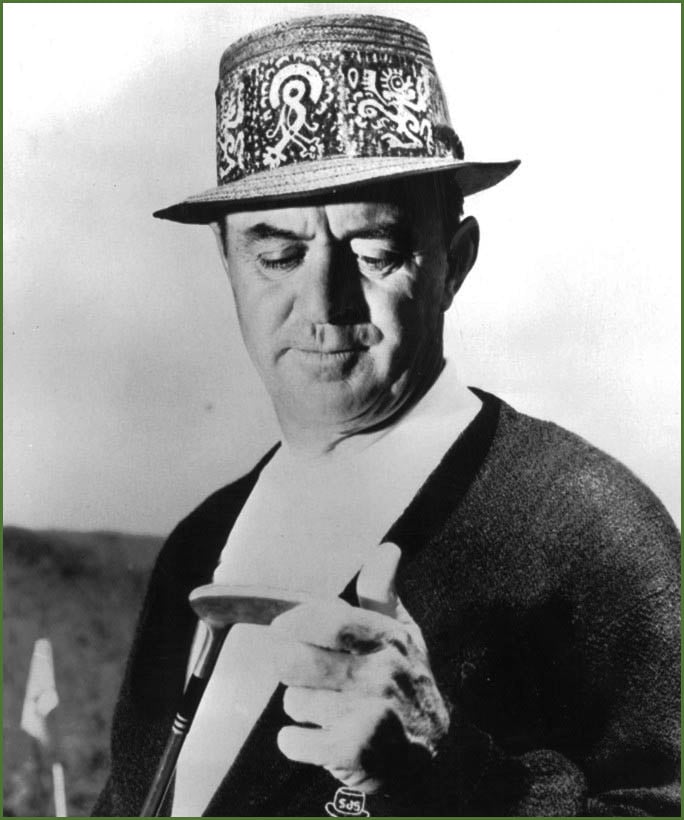
He trained at the Norfolk Naval Station, but didn’t succeed. However, the officers changed their mind once they learned they had a golf champion in front of them. They wanted him to teach golf to pilots, to improve their focus. Good news for Snead, Norfolk had a golf course, the Sewell’s Point Golf, designed by Donald Ross in 1926.
A lot of players like him were asked to become golf trainers in military bases, still in the idea to physically keep them in good shape, but also to boost their moral.
It was the case of William P. Turnesa , winner of the U.S. Amateurs in 1938. He was considered as the second best amateur after Bobby Jones. He enrolled in the Navy, and was part of the Naval Air Station in Hollywood, Florida, where he was also assigned to teach golf.
Another golf star was William Ben Hogan (1912-1997). In 1942, he won six tournaments, including the Hale America National Open Golf Tournament. On late 1942, he joined the Spartan School of Aeronautics, a civilian flight training school, in Tulsa, Oklahoma. Then, he joined the Army Air Corps one year later. He then went to the Camps Wolters in Mineral Wells, Texas, to join the Tarrant Field Army Air Corps Combat Crew School. He was later sent to the Army Air Force Officer Candidates School in Miami. Finally, in November 1943, he became second lieutenant. We cannot omit John Byron Nelson Jr. (1912-2006) when talking about golf icons! The great players couldn’t serve in the army since he had haemophilia.
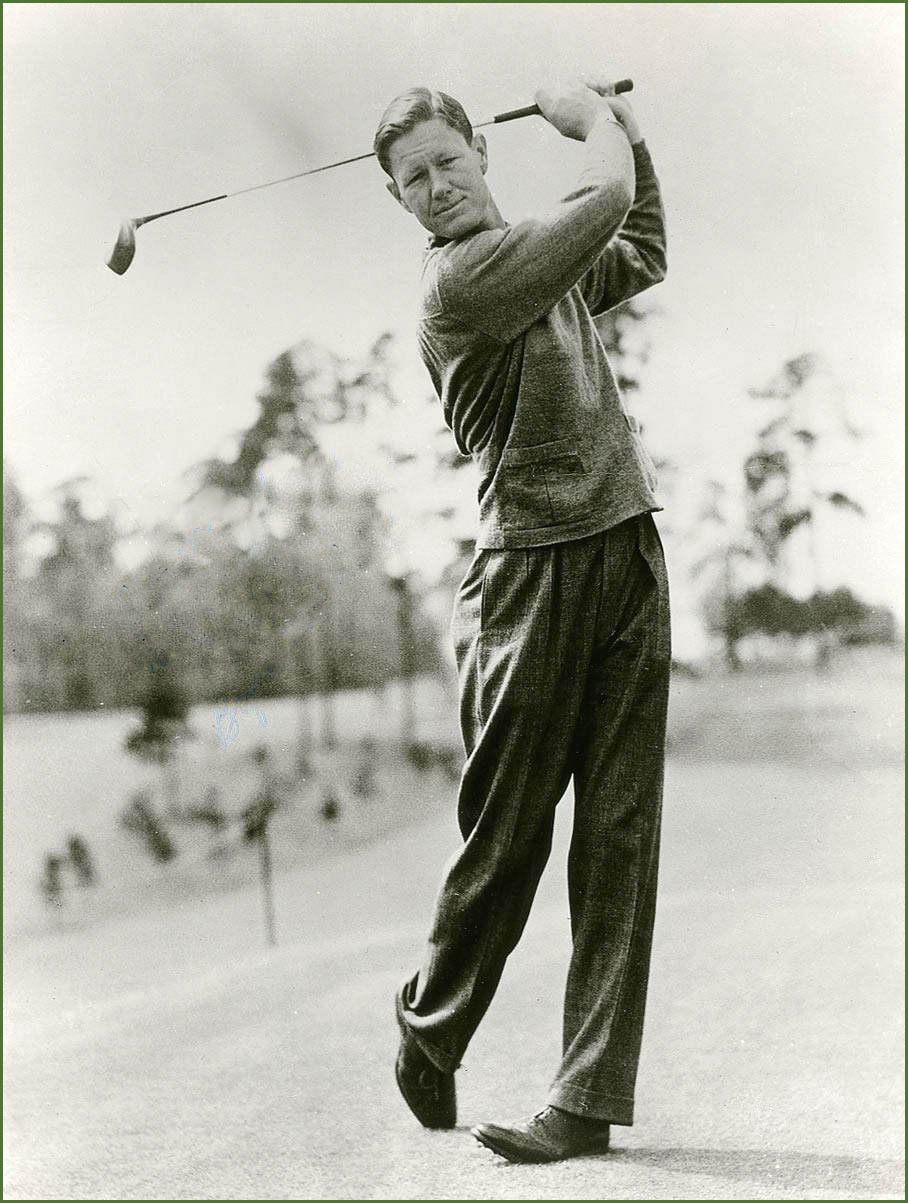
It was also the case of his colleague Harold McSpaden . Fred Corcoran thus asked them to contribute differently, by participating in exhibitions to raise funds. Unfortunately, some golfers will never be able to see the golf course again… Peter Page (When War Played Through Spelling), captain of the Princeton Golf team in 1940 and 1941. He was also president of the National Intercollegiate Golf Association. During the war, he was second lieutenant in the Marine Corps when he was killed in action in the South Pacific. Another deadly fate was that of John P. Burke (1917-1943) was the rising star of golf! At only seventeen, he won the Rhode Island Amateur Championship in, 1934. Then, he beat professionals, winning the Rhode Island Open in 1936 and 1938. On the same year, he was sacred at the National Intercollegiate Championship, becoming the most accomplished golfer in Rhode Island.
Like many others golfers, he had to report for army duty. In March 42, he was sent to the Officer Candidates School in Miami. Being there, he studied to become intelligence officer. At the end of 1942, he became second lieutenant. In early 1943, he was deployed to the European Theater of Operations, and his destiny changed, when he went to North Africa.
Here, he was Intelligence Officer for the Middle East Wing of the Air Transport Command in Tunisia. He tragically died after his bunkmate accidentally shot him while cleaning his rifle without any safety measure.
After the war, the John P. Burke Memorial Fund was established in Rhode Island Golf Association to pay tribute to those who served the country during World War II. Others were luckier, like Dale Bourisseau , who was also a golf player. In 1942, he enlisted in the army, where he went to an officer candidates school. In 1943, he was commissioned as second lieutenant. Then, he was sent to Italy as a platoon leader, in intelligence, where he lost a part of his right leg at the battle of Monte Cassino, near Naples. After the war, he will create the National Amputee Golf Association. Lloyd Eugene Mangrum won three tournaments in 1942. He was offered to become professional for the army to teach golf but he refused, wanting to serve. During the Normandy Campaign, on June 6 th , 1944, we was among the second wave of soldiers to land on Omaha Beach, but he got a jeep accident, and broke his arm. He was sent to the hospital, at St Andrew's, Scotland, quite ironical for a golfer! Indeed, this historical town is widely known for its golf history.
After recovering, Lloyd Mangrum was in charge of collecting allied’s dead bodies with his truck and storing them in refrigerated tents. Later, he was sent to the front and fought in the Battle of the Bulge. He will almost die here, and receive two Purple Hearts for his injuries after the war. When golf invited itself in a camp prisoner… The Stalag Luft III was a German camp of prisoners, located in Sagan, Poland. It housed mainly British and American Allied Air Force officers. Here conditions were a bit better than in other camps.
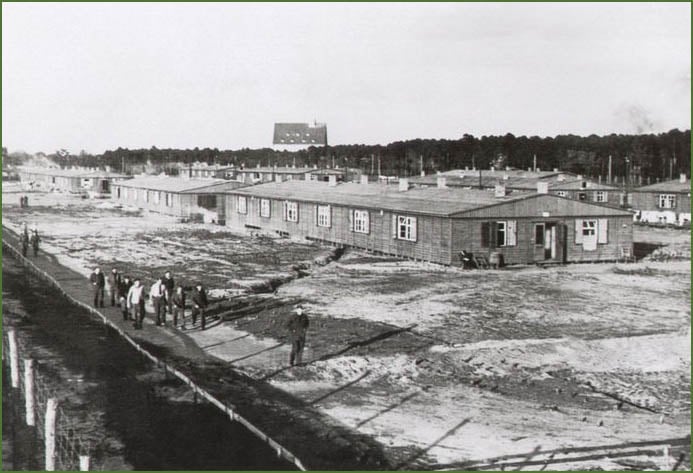
Sydney Smith , captured in Spring 1942, Pat Ward-Thomas , first imprisoned in Dulag Luft, a near Frankfurt, center for Air Force prisoners of war, near Frankfurt, in November 1940, and then transferred to Stalag Luft III in 1943 and Oliver Green , captured in Egypt, in June 1941, were all members of the Royal Air Force, and prisoners at the Stalag Luft III. Following Sydney Smith’s idea, they began to play golf with what they could find. The group began calling itself the “Sagan Golf Club”. It was formed of skilled golfers. Among them, Danny O’Brien (When War Played Through Spelling), former Scottish schoolboy champion. As a proper golf club, they had teaching professionals. The role was attributed to Danny O’Brien and Ronnie Morgan (When War Played Through Spelling) were unofficially the teaching professionals. They even built a kind of “nine-hole course”. But it went beyond the simple fact of playing golf… Indeed, the idea came to escape. And in the night of March 24 th - 25 th , 1944, two-hundred and twenty prisoners escaped. Seventy-six of them successfully went out. Seventy-three were recaptured, and fifty were executed. It was known as the The Great Escape.
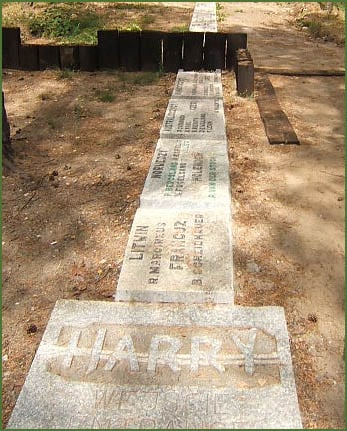
Part of one of the three tunnels, nicknamed "Harry", built to escape of the Stalag Luft III After the war, Ward-Thomas became a talented golf writer. Golf also had its part to play for D-Day Here is the special story of the Conwy Caernavonshire Golf Club. Founded in 1890, it was among the oldest in Wales. It was used by the Allied to build parts of artificial harbor to transport the war machinerie from ship to land during D-Day. Golf was also present on war zones… The American Officer Dwight David Eisenhower was a golf aficionado. After D-Day, he installed his Command Post in Reims, and established his headquarters in a schoolhouse. His living quartiers were at the clubhouse at the Gueux Golf Club, which allowed him to continue to play golf.
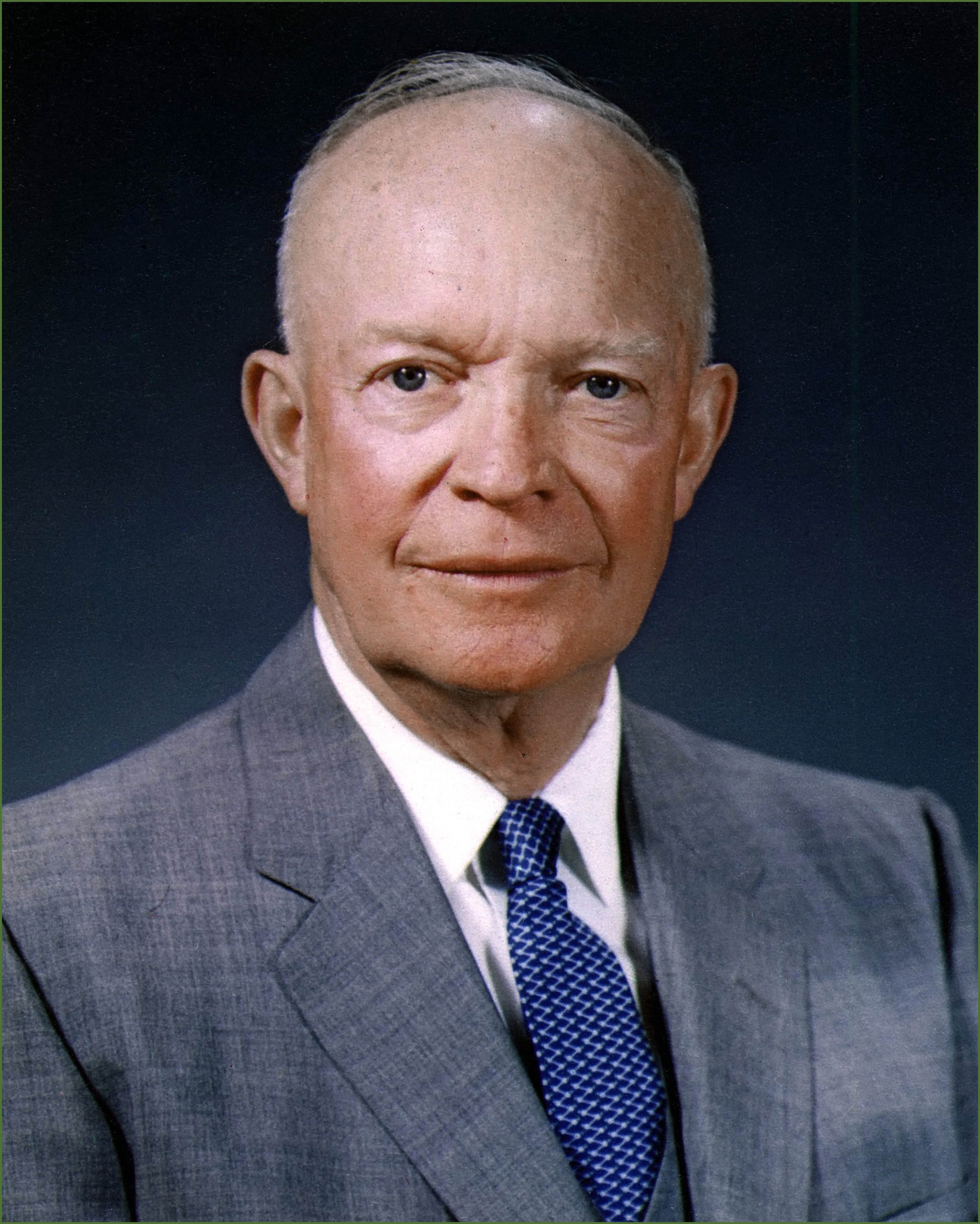
Another story, Dugan Aycock ’s. He was sent to North Africa in 1943 and used to play in Casablanca. In 1945, when transferred to Rome, he organised the Rome Open. Golf Clubs prepared themselves to the Allied victory In November 20 th , 1944, the Augusta National Golf prepared to abandon its meat business to return to the one of golf. One month later, it was reopening. The rehabilitation was done by German prisoners, detained near the Gordon Camp. Finally in 1945, the allied victory was official. Obviously, Eisenhower came back to London and played golf to celebrate it. Another good news: tournaments were back, and golf grew in popularity. The favorite for the season was Byron Nelson, nicknamed “Lord Byron”, but also “the Mechanic Man”, or “the Golfing machine”. In the same year, Sam Snead was also successful, winning five tournaments. Ben Hogan won six of them. An important one was the Masters of 1946, in Augusta. Five players who had been awarded purple hearts for war injuries participated. Lloyd Mangrum, Johnny Palmer (wounded in Japan), Rod Munday, soldier in the 84th Infantry Division, Al Zimmerman wounded while serving the Navy off the coast of Anzio, in Italy, and Buck White , also wounded while serving in the army in Italy. For the Masters, Hogan was the favorite, but Herman W. Keiser won against all expectations. In December 1945, the Royal Ancient Golf Club of St Andrews extended to Dwight Eisenhower a lifetime honorary membership. The same was done for Winston Churchill , who declined the offer, as he didn’t play golf anymore. Time them flew, seeing its icons playing their last tournaments. Nelson played for the last time in 1951, Snead in 1965. And Hogan won the U.S Opens in 1948, 1950, 1951, and 1953.
Source : When War Played Through - Golf during World War II , John Strege
Written by Lisa Marie, Trainee at Normandy American Heroes.
Topics: WWII , WWII Golf , Pearl Harbor

About this blog
Normandy American Heroes provides custom World War II tours of Normandy and beyond On our blog, we write about World War II, things to do in Normandy and much more.
Subscribe to email updates
Recent posts, posts by topic.
- World War 2 (100)
- World War Two (78)
- Infantry (31)
- WWII Atlantic Wall (31)
- WWII 1st US Army (29)
- France (24)
- WWII 79th Infantry Division (18)
- Third Reich (17)
- Normandy (14)
- WWII Engineers Special Brigade (14)
- WWII 29th Infantry Division (13)
- WWII 4th Infantry Division (12)
- US Navy (11)
- WWII 116th Infantry Regiment (11)
- US Coast Guards (10)
- WWII 115th Infantry Regiment (10)
- WWII 101st Airborne Division (9)
- WWII Paratroopers (9)
- England (8)
- WWII 175th Infantry Regiment (8)
- WWII 1st US Army Assault Training Center (8)
- Medal of Honor (7)
- Rangers (7)
- Slapton Sands (7)
- Brittany (6)
- Hawker Hurricane fighter plane (6)
- LST Landing Ship Tanks (6)
- Spitfire fighter plane (6)
- Air Force Commanding-in-Chief (5)
- France, Alsace (5)
- Gastronomy and cuisine (5)
- Germany (5)
- Joseph Goebbels (5)
- Reichsführer of the SS (5)
- Saunton Sands Beach (5)
- Third Reich Minister Propaganda (5)
- WWII Arthur Harris (5)
- WWII Bombardier B-26 Martin Marauder (5)
- WWII Eighth Air Force (5)
- WWII Golf (5)
- WWII P-47 Thunderbolt fighter plane (5)
- WWII Prime Minister Winston Churchill (5)
- Matt Urban (4)
- Nazi 2nd SS Panzer Division Das Reich (4)
- Third Reich Messerschmitt Bf 109 fighter plane (4)
- WWII 313 Infantry Regiment (4)
- WWII 315 Infantry Regiment (4)
- WWII Air Force Blockbuster Bomb "Cookie" (4)
- WWII Belgium Battle of the Bulge (4)
- WWII Boeing B-17 Flying Fortress (4)
- WWII Consolidated B-24 Liberator (4)
- WWII Duplex Drive Amphibious DD tank (4)
- WWII England (4)
- WWII Germany (4)
- WWII Lockheed P-38 Lightning fighter plane (4)
- WWII P-51 Mustang (4)
- WWII Rittershoffen Hatten (4)
- World War One (4)
- Covid-19 (3)
- Croyde Cliffs (3)
- Field Marshal Johannes Rommel (3)
- Green Hell (3)
- Heinrich L. Himmler (3)
- Hürtgen Forest (3)
- LCVP Higgins barge (3)
- Siegfried Line (3)
- Traveling to Europe (3)
- WWII 16th Infantry Regiment (3)
- WWII 1st Infantry Division (3)
- WWII Air Fighting Development Unit (ADFU) (3)
- WWII Battle of Britain (3)
- WWII Combat Medic (3)
- WWII Douglas C-47 Skytrain - Dakota (3)
- WWII Duplex Drive Amphibious Tank (3)
- WWII General Ira Eaker – USAAF Eighth Air Force (3)
- Woolacombe Beach (3)
- 14th Armored Division (2)
- 25thPanzergrenadier Division (2)
- 39th Infantry Regiment (2)
- 47th Infantry Regiment (2)
- 60th Infantry Regiment (2)
- 9th Infantry Division (2)
- Archduke of Austria (2)
- Austria-Hungary (2)
- Battle of Britain (2)
- British Commonwealth Air Training Plan (2)
- Cotentin Peninsula (2)
- Detlof von Winterfeldt (2)
- Eighth Air Force (2)
- Emperor of Germany & Prussia (2)
- Ernst Röhm (2)
- Ernst Vanselow (2)
- Field Marshal Johannes Erwin Eugen Rommel (2)
- Focke-Wulf Fw 190 Würger fighter plane (2)
- Fort Keranroux (2)
- France, Normandy, Cherbourg (2)
- France, Paris (2)
- France, Seine River (2)
- Health, Safety, Awareness (2)
- Heinrich Luitpold Himmler (2)
- Lieutenant Colonel Leon Vance (2)
- Limousin (2)
- Marshall Ferdinand Foch (2)
- Matthias Erzberger (2)
- Maxime Weygand (2)
- Nazi bombardier Arado Ar 234 B Blitz (2)
- Netherlands (2)
- Ninth Air Force (2)
- Normandy most beautiful villages (2)
- Operation Cobra (2)
- Operation Northwind (2)
- Oradour-sur-Glane massacre (2)
- Prime Minister Winston Churchill (2)
- Rat Race (2)
- Rosslyn Wemyss (2)
- Russia & England (2)
- Shoah Germany (2)
- Stabschef of the Sturmabteilung (2)
- The West Wall (2)
- WWI Alliance: Germany (2)
- WWI Armistice of November 11th (2)
- WWI Commander-in-Chief (2)
- WWI Commander-in-Chief Royal Navy (2)
- WWI Franz Ferdinand (2)
- WWI General Imperial Army (2)
- WWI Head of the delegation (2)
- WWI Major-General Allied Armies (2)
- WWI Officer of the Imperial Navy (2)
- WWI Triple Entente: France (2)
- WWI Wilhelm II (2)
- WWI and WWII Medics (2)
- WWII 12th Infantry Regiment (2)
- WWII 22nd Infantry Regiment (2)
- WWII 297th Engineer Battalion The Jack Rabbits (2)
- WWII 29th Rangers Battalion (2)
- WWII 315th Infantry Regiment (2)
- WWII 39th Infantry Regiment (2)
- WWII 8th Infantry Division (2)
- WWII 8th Infantry Regiment (2)
- WWII 9th Infantry Division (2)
- WWII Belgium Task Force Hogan (2)
- WWII General Dwight David "Ike" Eisenhower (2)
- WWII Golf (2)
- WWII Merchant Ships (2)
- WWII and WWI Battlefield Medicine (2)
- Warsaw ghetto (2)
- 1st Infantry Division (1)
- 3rd Infantry Division (1)
- 3rd US Army camp Néhou (1)
- 5th Rangers Battalion (1)
- 79th Infantry Division (1)
- 84th Field Artillery Battalion (1)
- Anytime (1)
- Anywhere (1)
- Auschwitz - Birkenau Death Camp (1)
- B-26 Martin Marauder (1)
- Bar Nothing! (1)
- Barfleur mussels (1)
- Boeing B-17 Flying Fortress (1)
- Brest Kerognan guns (1)
- Brittany American Cemetery (1)
- Canada Bagotville Air Force Base (1)
- Champagne (1)
- Clovis king of the Franks (1)
- Culture (1)
- Drancy internment camp (1)
- Elbe River Linkup (1)
- France, Chateau Thierry (1)
- France, La Roche Guyon Castle (1)
- France, Lorraine (1)
- France, Mantes-Gassicourt (1)
- France, Mayenne (1)
- France, Normandy, Fierville-les-Mines (1)
- Hans-Joachim Marseille (1)
- Health Pass and QR code (1)
- Heritage (1)
- Hesketh Golf Club (1)
- Japan Admiral Isoroku Yamamoto (1)
- Japan Aichi D3A1 Type 99 “Val” dive bomber (1)
- Japan Kido Butai Imperial Navy First Air Fleet (1)
- Japan Mitsubishi A6M2 Type 0 “Zero” fighter plane (1)
- Japan Nakajima B5N2 Type 97 “Kate” attack plane (1)
- Kassel Mission bombardment (1)
- King of England (1)
- La Haye du Puits WWII (1)
- Le Mans (1)
- Lebensborn Aryan children project (1)
- Lieutenant Colonel Harry Flint (1)
- Lodz Jews ghetto (1)
- Lucky Strike Camp (1)
- Luftwaffe ace (1)
- MOH recipient (1)
- Major Cortez F. Enloe (1)
- Major R. P. Sullivan (1)
- Martin Bormann (1)
- Medal of Honor recipient (1)
- Missak Manouchian (1)
- Nazi 12th SS Panzer Division Hitler Jugend (1)
- Nazi 5th SS Panzer Division Viking (1)
- Nazi Afrika Korps North African Campaign (1)
- Nazi Blitzkrieg (1)
- Nazi Einsatzgruppen SS paramilitary death squads (1)
- Nazi Party Chancellery leader (1)
- Nazi, Schutzstaffel, SS (1)
- Normandy Azeville Battery (1)
- Normandy Azeville German Battery (1)
- Normandy Barfleur mussels (1)
- North Carolina (1)
- Olympics (1)
- Omaha Beach (1)
- Operation Aktion T4 mass murders (1)
- Operation Argument (1)
- Operation Wacht am Rhein (1)
- P-47 Thunderbolt (1)
- P-51 Mustang (1)
- Pas-de-Calais (1)
- Paul Joseph Goebbels (1)
- Pearl Harbor (1)
- Pitchipoi imaginary place for the French (1)
- Plastic Surgery (1)
- Ploesti (1)
- Post-traumatic stress disorder (1)
- Prime Minister (1)
- RMS Queen Mary (1)
- Reich Minister of Propaganda (1)
- Roer River (1)
- Romania (1)
- Royal Air Force (RAF) (1)
- SS Hauptsturmführer Joseph Mengele (1)
- Saint Lo (1)
- Saint Valérie en caux (1)
- Saint-Germain-de-Varreville (1)
- Shell Shock (1)
- Shoah, Poland (1)
- Sir Harold D. Gillies (1)
- Sobibor Death Camp (1)
- Spain Agent Garbo (1)
- Staff Sergeant Sherwood H. Hallman (1)
- Train accident of Saint Valérie en Caux (1)
- Traveling to France (1)
- UNESCO World Heritage (1)
- USA Anna Coleman Watts Ladd (1)
- USA Clarkair CA-1 Bulldozer (1)
- USA The Citadel Military College of South Carolina (1)
- Ucrania (1)
- Vaccination (1)
- Vichy Regime of Marshal Petain (1)
- WWI Alfred Graf von Oberndorff - Germany (1)
- WWI Alsace-Lorraine (1)
- WWI Battle of the Somme (1)
- WWI Captain Wilfred Percy Nevill (1)
- WWI Compiegne (1)
- WWI Compiègne (1)
- WWI Field Marshal Douglas Haig (1)
- WWI Gallipoli peninsula campaign (1)
- WWI General Erich Friedrich Wilhelm Ludendorff (1)
- WWI General Helmuth Johannes Ludwig von Moltke (1)
- WWI General John Pershing (1)
- WWI General Robert Georges Nivelle (1)
- WWI General von Schlieffen (1)
- WWI King Albert I (1)
- WWI Marshal Philippe Petain (1)
- WWI President Georges Clemenceau (1)
- WWI President Thomas Woodrow Wilson (1)
- WWI Prime Minister David Lloyd George (1)
- WWI Prime Minister Vittorio Orlando (1)
- WWI Private First-Class Augustin Trébuchon (1)
- WWI Private George Lawrence Price (1)
- WWI Rear Admiral George Hope (1)
- WWI The Fourteen Points (1)
- WWI The Great War (1)
- WWI The Trench Warfare (1)
- WWI Treaty of Neuilly with Bulgaria in 1920 (1)
- WWI Treaty of Saint-Germain with Austria in 1919 (1)
- WWI Treaty of Sèvres with Ottoman Empire in 1920 (1)
- WWI Treaty of Trianon with Hungary in 1920 (1)
- WWI Treaty of Versailles with Germany in 1919 (1)
- WWI the Ottoman Empire (1)
- WWI the Zimmermann telegram (1)
- WWII - Alsace-Lorraine (1)
- WWII 100th Infantry Battalion (1)
- WWII 146th Special Underwater Demolition Battalion (1)
- WWII 1st Lieutenant John Michael Canepa (1)
- WWII 26th Field Artillery Battalion (1)
- WWII 297th Engineer Battalion The Jack Rabbits (1)
- WWII 39th Infantry (1)
- WWII 3rd Armored Division (1)
- WWII 3rd US Army (1)
- WWII 3rd US Army camp Néhou (1)
- WWII 442nd Regimental Combat Team (1)
- WWII 47th Infantry Regiment (1)
- WWII 5th Rangers Battalion (1)
- WWII 60th Infantry Regiment (1)
- WWII 69th Infantry Division (1)
- WWII 70th Tank Battalion (1)
- WWII 79th Infantry Division (1)
- WWII 79th Reconnaissance Troops (1)
- WWII 7th Armored Division (1)
- WWII 82nd Infantry Division (1)
- WWII 83rd Reconnaissance Battalion (1)
- WWII American of Japanese ancestry (AJAs) (1)
- WWII Anything (1)
- WWII Brigadier General Theodore Roosevelt Junior (1)
- WWII Führersonderzug Amerika (1)
- WWII General Simon Bolivar Buckner Junior (1)
- WWII Hawker Typhoon fighter bomber (1)
- WWII Iceland (1)
- WWII Invasion of Poland (1)
- WWII Japan Hideki Tojo (1)
- WWII Lieutenant General Lesley James McNair (1)
- WWII Poland (1)
- WWII Third Armored Division (1)
- WWII USA General Troy Houston Middleton (1)
- WWII USA Lieutenant Joseph Kennedy (1)
- West Point (1)
- West Point military academy (1)
- William the Conqueror (1)
- World War I Battle of Verdun (1)
- World War I The Great War (1)
- prosthetic masks (1)
- the Big Week (1)

France Office (Headquarters)
102 Rue Saint-Jean 14400 Bayeux, France
France Office (Carentan)
13 Rue Du Chateau 50500 Carentan, France
Follow Normandy American Heroes:

Terms and Conditions
© 2022 Normandy American Heroes

IMAGES
VIDEO